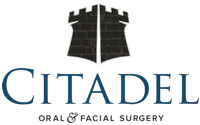Anaesthesia
Also termed GA, having a general anaesthetic means being “put completely to sleep”.It is done by a Board Certified anaesthesiologist in an operating room environment. Medications are given directly into the bloodstream through a tiny plastic catheter in your arm or hand to make you fall asleep. Once asleep, a small tube is placed through your nose or mouth to assist your breathing. There is no awareness of recollection of your surgical procedure.
Reasons for selecting a GA are more difficult procedures that require optimal patient cooperation, some medical conditions, or even just patient preference. GA is available in our Dartmouth facility (the East Coast MediCenter) or in a hospital.
If you are having a general anaesthetic, please carefully review these instructions prior to your procedure.
Intravenous (I.V.) Sedation, also called Conscious Sedation or “twilight sleep”, means giving you medications to make you relaxed and drowsy directly into your bloodstream. A small plastic catheter is introduced into a vein in your arm or hand, similar to having a blood test. You will be carefully monitored throughout the sedation. For your safety, there is some awareness and you will be able to follow commands, but you are in an “altered state” which is usually perceived as quite pleasant. Local anaesthesia is also used, thereby eliminating any discomfort for the surgery. Though most of the procedure is usually forgotten, you may remember portions of it. There is some variation among individuals.
I.V. sedation is a very popular option to significantly reduce anxiety, make the time pass quickly, and help forget most of the procedure, all at a very reasonable cost. Most services we offer can be done very comfortably under I.V. sedation, and it is available at most of our offices.
If you are having I.V. Sedation, please carefully review these instructions prior to your procedure.
Often called “freezing”, just like at your dentist, this is anaesthetic medication placed directly in your mouth to numb the surgical areas. It does not alter your mood, awareness or memory of the procedure, but it eliminates pain. It involves the quickest recovery and lowest expense.
It is always used in conjunction with I.V. Sedation or General Anaesthesia, and is often selected alone for short procedures or those that cause very little discomfort, such as having a single tooth removed or dental implants.
If you are having Local Anaesthesia only, please carefully review these instructions prior to your procedure

